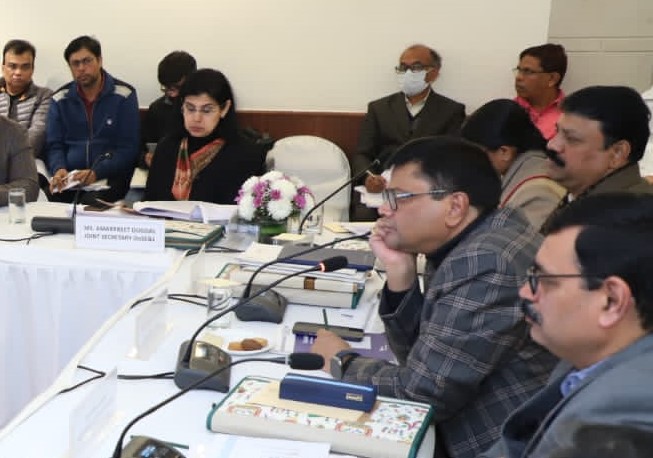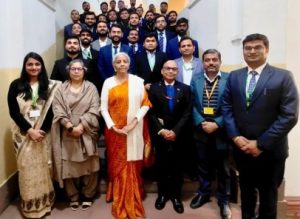
Ministry of Education Budget meeting
By Kumar Vikram
New Delhi, January 19: A concerning trend has emerged as the recently released ASER 2023 survey report shed light on the educational landscape in India, specifically focusing on the proficiency of the youth in basic arithmetic. The data revealed that 45 per cent of the youth in the age group of 14-18 possess basic arithmetic skills, leaving a significant 55 per cent struggling to meet this foundational requirement.
This revelation becomes all the more pertinent in the context of India’s ambitious economic aspirations. Finance Minister Nirmala Sitharaman recently articulated a vision of India becoming a $30 trillion economy by 2047. However, a critical question arises – how is this colossal economic leap achievable when a substantial portion of the upcoming workforce lacks the ability to perform simple arithmetic?
The ASER 2023 report highlights the repercussions of low levels of foundational numeracy. The youth, who fall short in basic arithmetic proficiency, face challenges in practical scenarios such as applying measurements, utilizing the unitary method, and conducting simple financial computations. This deficiency extends to managing budgets, applying discounts, calculating interest rates, or understanding loan repayment – skills crucial for financial literacy in a developing economy.
Moreover, the report emphasizes the potential long-term consequences of this educational gap. Students who progress through the school system without acquiring foundational abilities are unlikely to bridge the gap later. The curriculum assumes that students in each grade have met the prerequisites of the previous grade, making it challenging for late bloomers to catch up.
One of the revealing tasks in the ASER 2023 survey was a scenario involving interest rates offered by three banks. Only 10.6 per cent of the youth who could perform at least a subtraction problem were able to correctly answer questions related to taking a loan of Rs 20,000, reflecting the stark reality that a mere six per cent of all youth demonstrated financial literacy.
Functional tasks integrated into the survey mirror real-life challenges that the youth might encounter. The report notes little improvement in functional abilities since ASER 2017. For instance, a task requiring basic numeracy, such as using the unitary method to calculate the number of chlorine tablets needed to purify water, witnessed a marginal decline from 50.2 per cent in 2017 to 48.4 per cent in 2023.
The ASER 2023 report serves as a wake-up call, emphasizing the urgency of addressing the foundational gaps in education. As India aspires to reach unprecedented economic heights, it becomes imperative to invest in the educational infrastructure that ensures a skilled and numerate workforce. The vision of a $30 trillion economy by 2047 necessitates a parallel commitment to empowering the youth with essential skills, including basic arithmetic, paving the way for a sustainable and inclusive growth trajectory.
(About the Survey: The ASER 2023 sample consists of about 35,000 youth in the age group of 14-18 years from 28 districts spread across 26 states. While the sample is not nationally representative, the size and geographical spread gives an overall picture of the rural population in India. It gives a snapshot of the lives of young people in rural India – their school and work status, their digital engagement, their ability to do simple everyday calculations as well as common digital tasks and their aspirations.)
Subscribe: youtube.com/@TheRaisinaHills Join: https://whatsapp.com/channel/0029VaFAp9b60eBiuA8v1x0s







